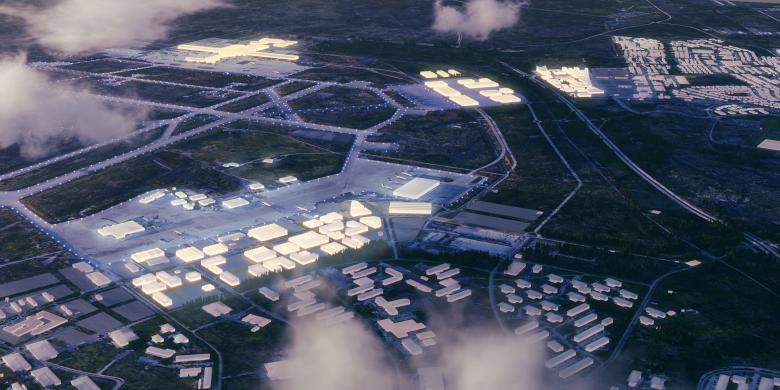Keflavík Airport Area
Keflavík, Iceland
- Architects
- KCAP Zürich
- Location
- Keflavík, Iceland
- Year
- 2021 - ongoing
- Client
- Kadeco, Keflavík
- Program
- 55 km2 strategic masterplan for the development of the Keflavík Airport Area
- Role
- Urban planner and urban design
- Participating parties
- WSP, Felixx Landscape Architects & Planners, MIC Mobility in Chain, VSO Consulting, Reykjavík, Buck Consultants International, Nijmegen/The Hague, Buro Happold Berlin, Base Design Brussels, Maurits Schaafsma, Amberg Loglay, Kanon Arkitektar Reykjavík
The current excess of available land in the vicinity of the Keflavík Airport creates a risk of low-density, low value development. The strategy identifies catalyst sites that achieve a high impact by identity-building and value creation. The plan creates hubs for the neighbouring communities with projects that have a local ownership and answer to existing needs. The new centralities form a polycentric urban archipelago, connected by the landscape of the Airport Corridor. Landscape innovation will be deployed to integrate climate mitigation, and will play a fundamental role as the ‘identity carrier’ for the airport area. Tapping into the government’s climate action plan, the landscape concept connects the Airport Corridor into a national network of reforestation projects. A future oriented mobility vision comprising the Keflavík-Reykjavík Link (BRT), local public transport and active mobility linkages connects the airport area’s urban nodes for travellers and inhabitants.
The multidisciplinary team developed a cohesive yet incremental strategy and a phased timeline for greenfield interventions and the transformation and densification of existing built areas. These sites can facilitate diversification into new sectors such as the production of green hydrogen, hi-tech agriculture, low carbon innovation and marine aquaculture. Keflavík Airport Area will attract new high-value companies and create opportunities for a diverse workforce. The economic strategy will deepen the pool for innovative sectors by attracting international experts as well as improving educational opportunities for locals. A gradual approach will provide investors with a trajectory that responds to the market, to the culture of development and to the stakeholder network that needs to be developed to create a resilient social and business ecosystem.
Related Projects
Magazine
-
Winners of the 5th Simon Architecture Prize
1 week ago
-
2024, The Year in …
1 week ago
-
Raising the (White) Bar
1 week ago
-
Architects Building Laws
1 week ago







